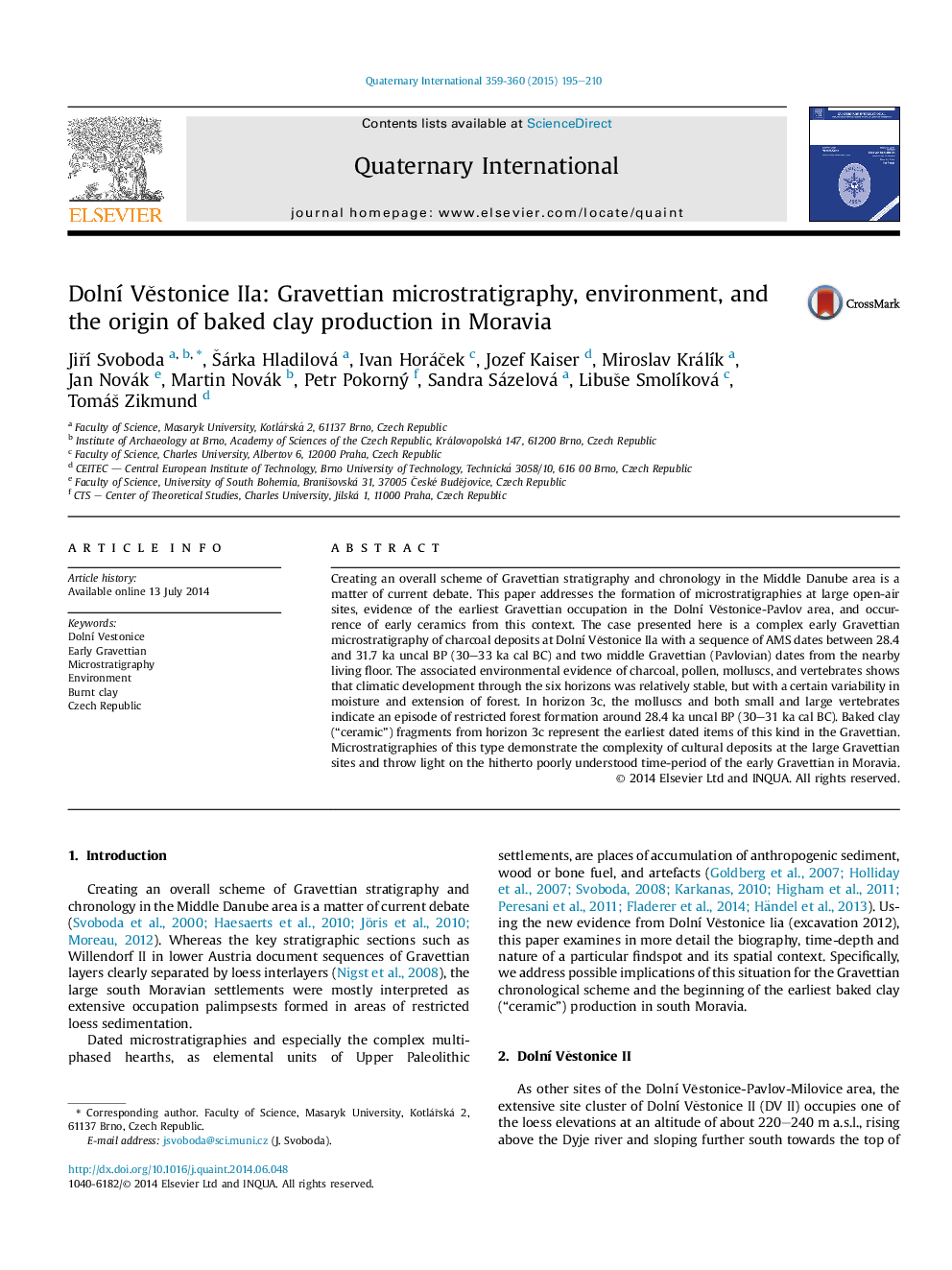| Article ID | Journal | Published Year | Pages | File Type |
|---|---|---|---|---|
| 1040981 | Quaternary International | 2015 | 16 Pages |
Abstract
Creating an overall scheme of Gravettian stratigraphy and chronology in the Middle Danube area is a matter of current debate. This paper addresses the formation of microstratigraphies at large open-air sites, evidence of the earliest Gravettian occupation in the Dolnà VÄstonice-Pavlov area, and occurrence of early ceramics from this context. The case presented here is a complex early Gravettian microstratigraphy of charcoal deposits at Dolnà VÄstonice IIa with a sequence of AMS dates between 28.4 and 31.7 ka uncal BP (30-33 ka cal BC) and two middle Gravettian (Pavlovian) dates from the nearby living floor. The associated environmental evidence of charcoal, pollen, molluscs, and vertebrates shows that climatic development through the six horizons was relatively stable, but with a certain variability in moisture and extension of forest. In horizon 3c, the molluscs and both small and large vertebrates indicate an episode of restricted forest formation around 28.4 ka uncal BP (30-31 ka cal BC). Baked clay (“ceramic”) fragments from horizon 3c represent the earliest dated items of this kind in the Gravettian. Microstratigraphies of this type demonstrate the complexity of cultural deposits at the large Gravettian sites and throw light on the hitherto poorly understood time-period of the early Gravettian in Moravia.
Related Topics
Physical Sciences and Engineering
Earth and Planetary Sciences
Geology
Authors
JiÅà Svoboda, Å árka Hladilová, Ivan HoráÄek, Jozef Kaiser, Miroslav KrálÃk, Jan Novák, Martin Novák, Petr Pokorný, Sandra Sázelová, LibuÅ¡e SmolÃková, TomáÅ¡ Zikmund,
